Butt Wink Causes & Fixes For Perfect Squat Form
Author:
Reviewed by:
(21 years of Oly Lifting experience)
Unlock your full potential by engaging with our experts and community! Have questions about your fitness journey or looking for expert advice on weightlifting techniques? Don’t hesitate — leave a comment below and Jason Li will provide a personalized answer and insights to help you reach your goals.
Torokhtiy is reader-supported. Some links are affiliate links, and we may earn a commission at no extra cost to you. See our disclosure page for details.
Butt wink isn’t always an issue. However, it can be. That’s why we’re going to help you understand what causes butt wink when it’s an issue, what risks butt wink squats present, and how you can prevent it from happening.
In short, you’re about to become a squat butt wink expert!
Is it possible to fix butt wink?? Yes! Butt wink often happens without you realizing it. Once you’re aware of the issue, and know what causes it, you’ll find it’s surprisingly easy to correct.
That’s what this guide is here to help you with.

What Is Butt Wink?
The butt wink during squat is usually first noticed by your spotter. However, you’ll notice signs that something isn’t right. The simplest way to describe it is a strange feeling in your hips when you’re deep in your squat.
It often occurs when you’re reaching the end of your routine or lifting heavier than usual. Studies show the risk of butt wink when squatting is the same in men and women.
The butt wink can happen in any type of squat.
It’s called a butt wink because it happens at the bottom of your squat, your butt starts to tuck underneath your body. When doing squats your butt should stay neutral with your spine.
Your butt moving under your body is caused by a change in your lower back. Normally, during a squat, your back will stay neutral and the lower back muscles will be extended. When you butt wink, the lower back enters flexion, effectively meaning you have a rounded lower back.
In effect, your lower back is straight when you squat, when you butt wink your hips and butt tuck under you causing a slight curve in your lower back. The spine dips in toward your core.
Because your pelvis and lower back are connected, as soon as your butt starts to tuck in, you experience pelvic tilt and your spine will be under flexion. That results in lower back rounding.
It’s worth noting that butt wink during squats can appear in different stages of your squat. This is because it is affected by your current mobility level.
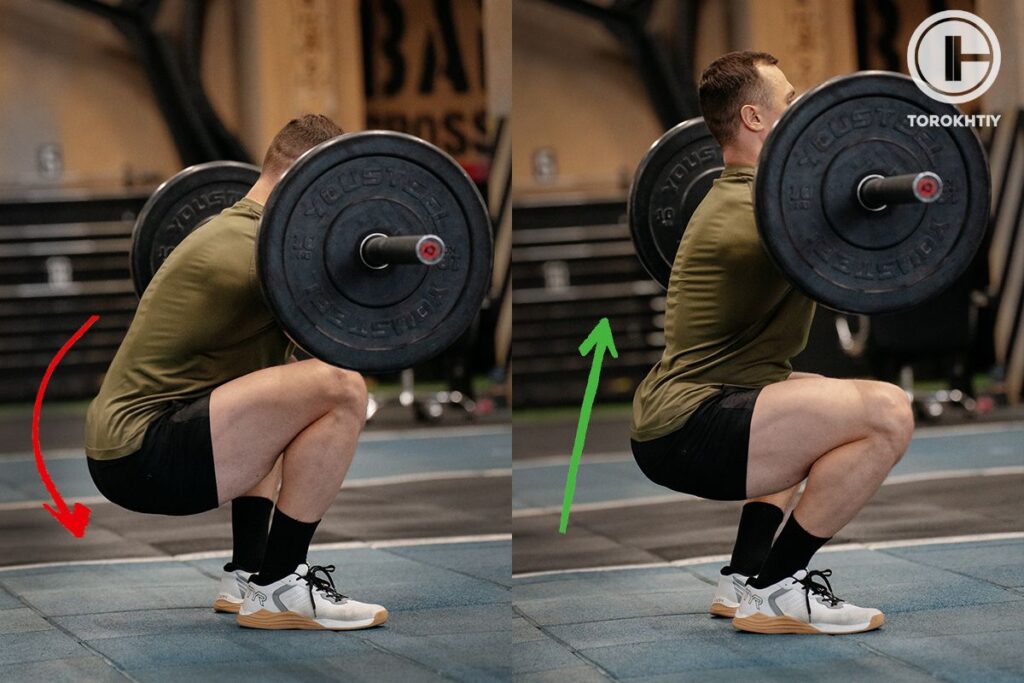
3 Potential Risks Of Butt Wink While Squatting
Even those new to squatting will find it comparatively easy to hold their back in a neutral position at the start of the squat. This neutral position needs to be maintained to lower the risk of injury.
The risks are generally greatest when you’re low in the squat, or when you’re undertaking weighted squats.
1. Bulging Disc
Your spine is made up of 33 bones, all stacked on top of each other. Between each bone is a disc. This allows maximum movement in the spine while protecting the spinal cord which runs through the center of it.
Scientific studies show that when the height of a disc shrinks there is an increased likelihood of disc bulge.
When your back is in a neutral position there is no excessive pressure on the discs. However, when you bend your spine the discs become thinner on one side, this increases the pressure and so does the likelihood of disc bulge.
A squat butt wink bends the spine and adds pressure. This can result in pain in your lower back and leg, a muscle spasm, and a flattening of the natural curvature of your spine.
In some cases, it can cause permanent nerve damage, especially if the bulge becomes a herniated disc. Studies show that the risk of herniated discs increases with age.
Follow us!

Free!
Get a 2-week Weightlifting Program as a bonus for the subscription to kickstart your training plan!

Free!
2. Inflammation
Butt wink can also cause pressure in your lower back and inflammation. This isn’t as potentially dangerous as a disc bulge. However, inflammation will place pressure on the surrounding muscles, tissues, and even bones. This means your back will be painful and you’re likely to suffer a loss of mobility.
While the issue is temporary, it will affect your ability to maintain a good exercise routine. It can even affect your ability to undertake daily activities. As studies show, low back pain is a common and costly condition.
3. Reduced Performance
Butt wink means your spine is no longer neutral. This affects its strength and reduces its protection from injury. Doing a butt wink while squatting pushes your body forward, reducing the stability of the position and lowering the load you can hold.
In short, butt winking while squatting is likely to slow your progress.
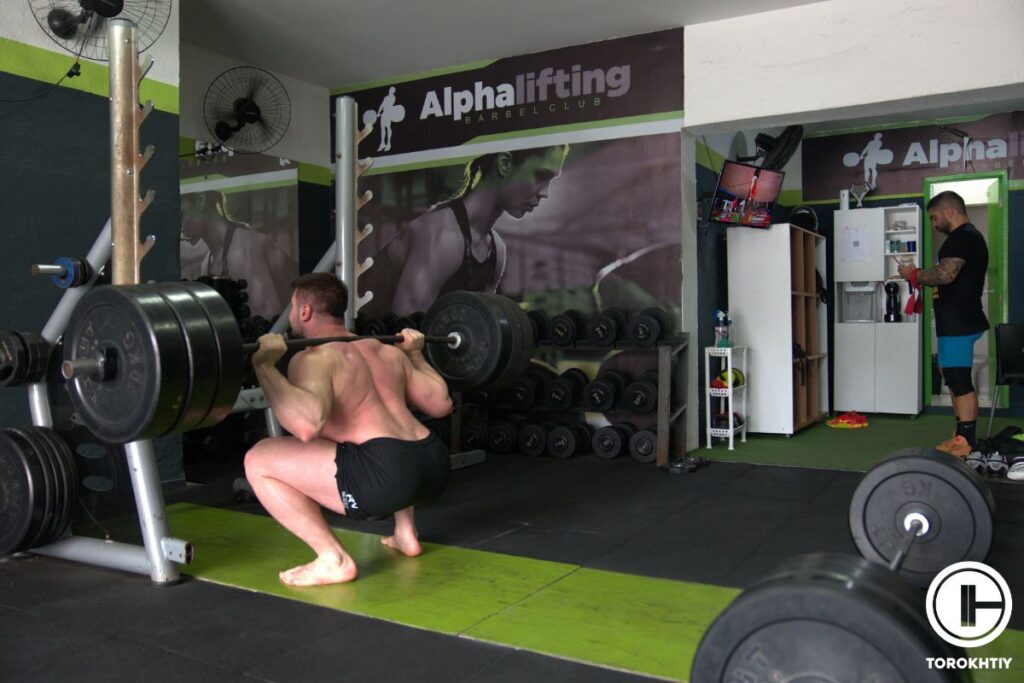
5 Causes Of Butt Wink
In order to prevent the issue you need to understand what causes butt wink. There are several factors which you should be aware of. This will help you inspect your squat properly to identify the cause.
1. Incorrect Stance
Everyone has a slightly different stance for their squat. It depends on the height of your body and even how long your upper half is in comparison to your lower body. The secret to squatting correctly is to keep the bar over your toes.
Most people fail to realize that their stance will be different to their friends. Trying to copy someone else will result in a poor stance and an increased risk of butt wink when squatting.
Try lying on the floor and get a friend to push your knee toward your chest. Your current mobility limit is indicated by your pelvis moving.
2. Your Anatomy
Your mobility, and therefore the depth of your squat, will be affected by your anatomy. For example, if you have deep hip sockets then you’ll be less mobile and won’t be able to hit the same depth as people with shallow hip sockets.
Try to rotate your hip further than the socket allows and you’ll do butt wink squats. It can help to move your feet further apart. However, you’ll get the maximum benefit from your squats by simply maintaining the correct position, even if that isn’t as deep as you would like.
3. Stability Issues
This is more common in those new to squatting. As you start out you may find it difficult to hold your core position or your back in the right position. This lack of motor control will cause you to wobble and increase the risk of butt wink.
Practice will help improve motor control.
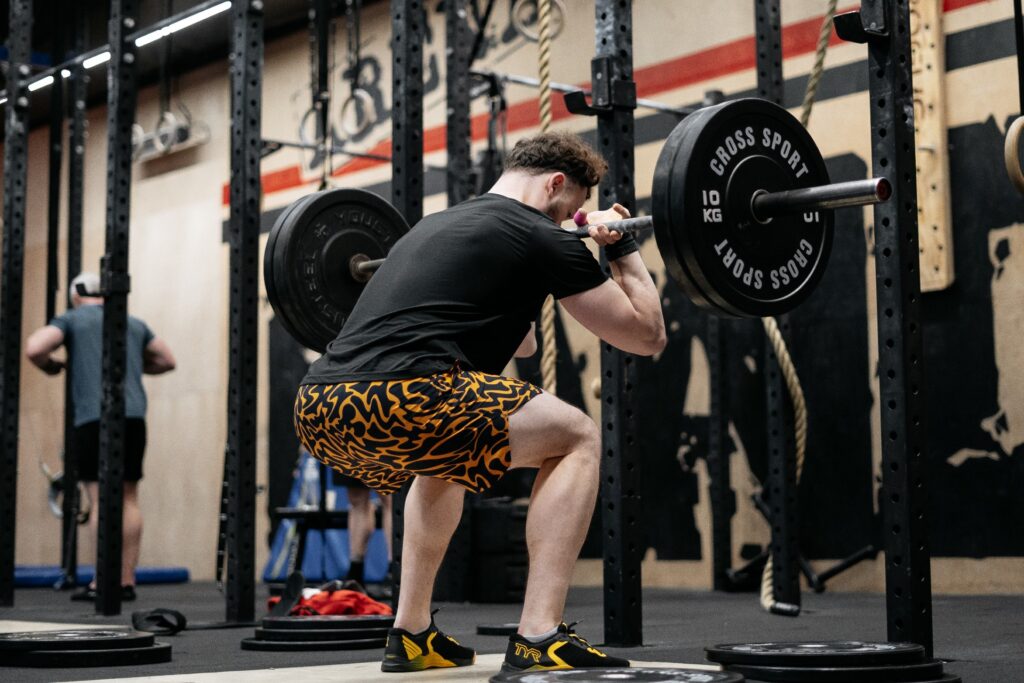
4. Ankle Mobility Issues
Many people suffer from painful knees while squatting. They’ll assume they have bad knees, compensating for this pushes the knees inward and causes butt wink squats.
However, in most cases, the knee pain is simply a sign of poor ankle mobility.
You can check your ankle mobility by putting one foot on the floor, five inches from a wall. Put your other knee on the floor. Now push your knee toward the wall without the heel of the other foot leaving the floor. If you can’t do it you have an ankle mobility issue.
Make sure you try it with both ankles, it’s common to have different results.
5. Depth Of Squat
The depth of your squat should be controlled by your current mobility level, stance, anatomy, and even your stability. Pushing past your current limit will increase the stress on your spine and the likelihood of you performing a butt wink.
If you push past the depth you’re currently comfortable with you’re more likely to butt wink. As with any exercise, gains should be made gradually. In short, don’t try to go too deep too soon.
How To Prevent Butt Wink?
You can stop butt winking! All you need is the following tips on how to fix butt wink.
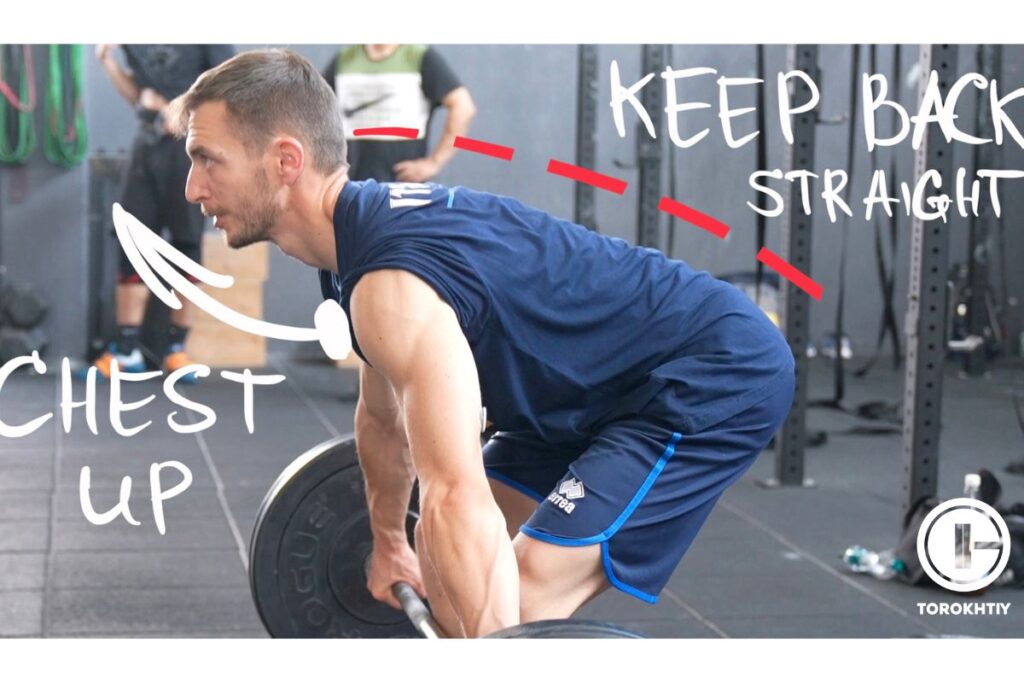
1. Identify When It Happens
The first step to stopping butt wink is to know when it’s happening. You can get a friend or coach to watch you squat. Ideally, do five unweighted squats and then one holding a weight in front of your body.
Your coach/friend will be able to identify when you start to butt wink. This will allow you to focus on your form or try other exercises to improve your strength and mobility for future squats.
If you haven’t got a friend or coach handy, try filming yourself doing squats.
2. Focus On Form
When squatting make sure you focus on starting with a neutral spine and keeping it in that position as you squat. It’s okay to lessen your normal load while you improve your form. It will help you do heavier squats in the future.
It’s also important to note when you start to butt wink and stop your squat just before, you don’t have to get your butt on the floor!
3. Work On Mobility
If you have identified a mobility issue then focus on mobility exercises. The simplest way to improve mobility in your ankles is to use a foam roll on your ankles and calves. You will also find it beneficial to do ankle circles and spell the alphabet with your feet.
To improve hip mobility you can do lunges and rotation exercises, such as fire hydrants. This simply requires you to start on your hands and knees then lift one leg and stretch it out to the side, keeping the knee bent.
🔻GET A FREE PROGRAM DEMO: 12 Week Squat Program by Oleksiy Torokhtiy
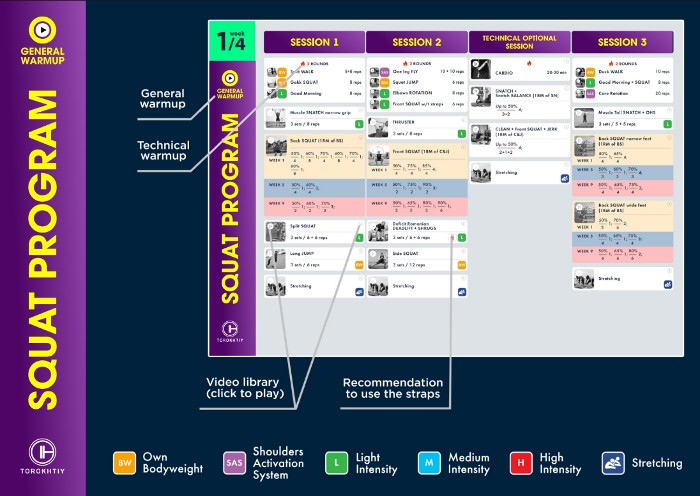
Do you want to double your squat strength? In just 12 weeks, you’ll be able to boost your squat results.
Enter your details and get a free demo (1 free week) of the squat program straight into your inbox.
4. Strengthen Your Core
This is an excellent way to prevent butt winks as you’ll have improved stability. Planks can be a good exercise for core strength. You can also try the dead bug or bird dog.
5. Try A Different Squat
You’ve probably tried adding weights to your squat. The classic approach is a barbell resting on your shoulders, known as the back squat.
However, if this is giving you butt wink, try a goblet squat or put a small weight plate under your heel to change the angle of your hips and let you get deeper.
If you’re feeling brave you can even try single-leg squats, such as split squats. It’s what works best for you.
FAQ
How to Squat Properly to Avoid Butt Wink?
The best way to avoid butt wink is to focus on form. Keep your feet hip distance apart and make sure that your knees stay over your toes as you bend.
Go as low as you feel comfortable while keeping a neutral spine. You can, and will, go lower with perseverance and repetition.
When Butt Wink Is a Problem?
Most people will experience butt wink, especially if they are aiming for deep squats. It can cause issues for anyone. However, you’re most at risk if you already have a back problem or if you’re doing weighted squats with a heavy load.
That’s when you need to be careful as, over time, it can cause damage to your spine.
Conclusion
While many people do butt winks, you don’t need to. Now that you know what they are and how to identify them, you can apply the strengthening exercises and improve your overall form.
We’ve given you everything you need to know. But, we’re always open to questions! Check out your squat form today and let us know how you’re doing.
Also Read:
- Front Squat Grip Secrets – Techniques & Tips
- Bad Squat Form: 7 Common Squat Mistakes Explained
- Are You Leaning Forward During Squats? Here’s the Fix
- 9 Harder Squat Variations To Try At Least Once
- 8 Squat Cues For Perfect Form And Strength
- 14 Best Back Squat Alternatives Trainers Recommend
- 12 Exercises To Improve Squat Strength & Form
- 11 Squat Accessory Lifts to Boost Your Squat Results
Referenses:
- Kim, S., Miller, M., Tallarico, A., Helder, S., Liu, Y., & Lee, S. (2021). Relationships between physical characteristics and biomechanics of lower extremity during the squat. Journal of Exercise Science and Fitness, 19(4), 269-277. https://doi.org/10.1016/j.jesf.2021.09.002
- Yu-Ju Hung, I., Ting-Fang Shih, T., Chen, B., & Guo, Y. L. (2021). Prediction of Lumbar Disc Bulging and Protrusion by Anthropometric Factors and Disc Morphology. International Journal of Environmental Research and Public Health, 18(5). https://doi.org/10.3390/ijerph18052521
- Ma, D., Liang, Y., Wang, D., Liu, Z., Zhang, W., Ma, T., Zhang, L., Lu, X., & Cai, Z. (2013). Trend of the incidence of lumbar disc herniation: Decreasing with aging in the elderly. Clinical Interventions in Aging, 8, 1047-1050. https://doi.org/10.2147/CIA.S49698
- Splittstoesser, R. E., Marras, W. S., & Best, T. M. (2012). Immune Responses to Low Back Pain Risk Factors. Work (Reading, Mass.), 41(0 1). https://doi.org/10.3233/WOR-2012-1053-6016
- Endo, Y., Miura, M., & Sakamoto, M. (2020). The relationship between the deep squat movement and the hip, knee and ankle range of motion and muscle strength. Journal of Physical Therapy Science, 32(6), 391-394. https://doi.org/10.1589/jpts.32.391
Why Trust Us?
With over 20 years in Olympic weightlifting, strength training, nutrition coaching, and general fitness our team does its best to provide the audience with ultimate support and meet the needs and requirements of advanced athletes and professional lifters, as well as people who strive to open new opportunities and develop their physical capabilities with us.
By trusting the recommendations of our certified experts in coaching, nutrition, and sports training programming, as well as scientific consultants, and physiotherapists, we provide you with thorough, well-considered, and scientifically proven content. All the information given in the articles concerning workout programming, separate exercises, and athletic performance, in general, is based on verified data.
The product testing process is described in more detail here.
Author: Jason Li
Personal Coach, Functional Range Conditioning Mobility Specialist
Jason is an NYC personal training expert and National level Olympic Weightlifting Coach with over 10 years of experience training everyday clients to high levels of performance. He has trained everyone from youth (13 years old and under) to masters (60+ years old) to regional and national rankings for powerlifting, Olympic Weightlifting, Short distance (up to 200m) sprinting, discus & hammer throwing.
Reviewed by: Oleksiy Torokhtiy
Olympic Weightlifting Champion, PhD in Sport Science
Best Results: Snatch – 200 kg,
C&J – 240 kg
Oleksiy Torokhtiy is a professional athlete boasting 20 years of experience in Olympic weightlifting. With multiple European and World titles under his belt, he has showcased his prowess in two Olympic Games (Beijing 2008 and London 2012). Upon concluding his illustrious career, Oleksiy dedicated himself to coaching. By 2022, he had conducted over 200 weightlifting seminars worldwide. He is the visionary behind an international sportswear and accessories brand known for its motto, “Warm Body Cold Mind.” Additionally, he is an esteemed author and the creator of a series of training programs and eBooks.




Still have questions after reading our article? Unlock your full potential by engaging with our experts and community! Don’t hesitate — leave a comment below and Jason Li will provide a personalized answer and insights to help you reach your goals.